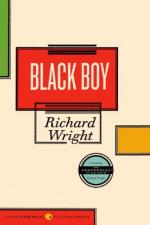|
This section contains 229 words (approx. 1 page at 400 words per page) |

|
Black Boy Summary & Study Guide Description
Black Boy Summary & Study Guide includes comprehensive information and analysis to help you understand the book. This study guide contains the following sections:
This detailed literature summary also contains Bibliography on Black Boy by Kay Boyle.
Kay Boyle drew a great deal of attention from literary stalwarts from her earliest publications in European journals and magazines. Later reprinted in the essay, "The Somnambulists," in 1929, William Carlos Williams wrote in transition that Boyle's stories were "of a high degree of excellence." He also noted that people with a "comprehensive" but "disturbing view of what takes place in the human understanding at moment of intense living," will not succeed with the American readership.
Boyle's uniqueness was reflected not only in her style, but also in her subject matter. In the 1920s, Boyle's cause—aptly reflected by her avant-garde style—was the liberation of art from literary traditions. By the following decade, Boyle was turning away from the text and to the world in which it was perceived. Her best-known works of the 1930s and 1940s concern serious issues, such as racial oppression and Nazism.
The story "Black Boy," first published in 1932 in the New Yorker, contains a very real social message. At the time of its creation, Boyle says, "stories were written in protest, and also in faith, and they were not unlike fervent prayers offered up for the salvation of man." Through works such as "Black Boy," Boyle addresses the issue of racial discrimination in the United States. Yet Boyle makes it succeed on levels that extend beyond that of social fiction.
Read more from the Study Guide
|
This section contains 229 words (approx. 1 page at 400 words per page) |

|



